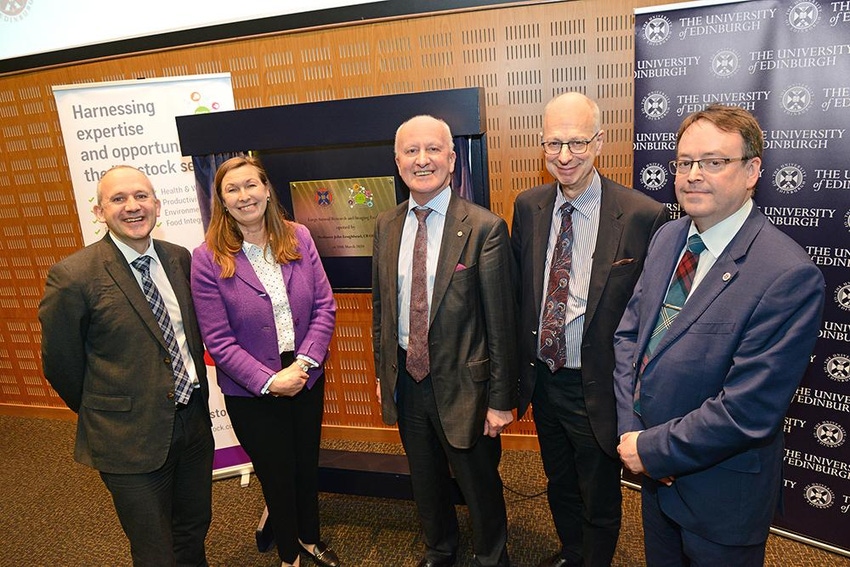U.K. research facility will provide "unprecedented insights" into livestock and human health.
March 12, 2020

The University of Edinburgh’s Large Animal Research Imaging Facility (LARIF) was officially opened by professor John Loughhead, chief scientific adviser for the U.K. Department of Business, Energy & Industrial Strategy. LARIF will enhance food security through research aimed at producing livestock that are genetically more resistant to disease and the development of improved vaccines for animals, an announcement said.
“Agricultural technologies are a sometimes unrecognized but important component in supporting the agriculture industry to cut its emissions and develop sustainable farming practices. ... LARIF illustrates the positive effects of successful collaboration between academia, industry and the government in spreading knowledge and expertise while developing the technologies of the future,” Loughhead noted.
Research conducted at the facility will safeguard human health by helping tackle foodborne infections and developing strategies against antimicrobial resistance, the university said, noting that LARIF will also advance efforts to develop treatments for diseases that affect people, such as neurological conditions.
Development of this purpose-built facility is supported by a £25 million investment from the University of Edinburgh and the Centre for Innovation Excellence in Livestock (CIEL), which includes £10.6 million of funding from Innovate UK.
Specialist facilities
LARIF houses imaging, surgical, gene editing and infection containment facilities, offering exceptional specialist capability for in-depth studies into the health and well-being of all major farmed livestock, the University of Edinburgh said.
Also housed at LARIF is the Wellcome Trust-funded Critical Care Laboratory for Large Animals, which supports the study of large animal biology with all of the resources of a human hospital.
Highly skilled veterinarians who are European and Royal College of Veterinary Surgeons-recognized specialists in veterinary anesthesia will provide around-the-clock care for animals involved in studies carried out in the facility, the university said.
There is also advanced medical imaging equipment on site, enabling detailed studies into degenerative and neurological diseases, body composition and the anatomy and physiology of large animals.
Understanding human disease
In addition to research to understand livestock diseases, research at LARIF will also investigate human conditions, the university said.
This means that treatments developed using large animals are more likely to be successful in people than those tested on cell cultures or using mice and rats, which will help reduce the number of animals used overall.
This new facility is based at the university's Royal (Dick) School of Veterinary Studies' Easter Bush Campus, alongside prestigious research centers like The Roslin Institute and the Allermuir Avian Innovation & Skills Centre. Collectively, the Easter Bush Campus represents the largest concentration of animal science-related expertise in Europe, the announcement said.
"LARIF is a unique and world-leading facility that significantly enhances our ability to study human and animal health. Taking this multidisciplinary approach is a key focus for the university and can lead to significant advances in medicine, veterinary medicine and agricultural science," said professor David John Argyle, head of the Royal (Dick) School of Veterinary Studies.
You May Also Like


.png?width=300&auto=webp&quality=80&disable=upscale)
